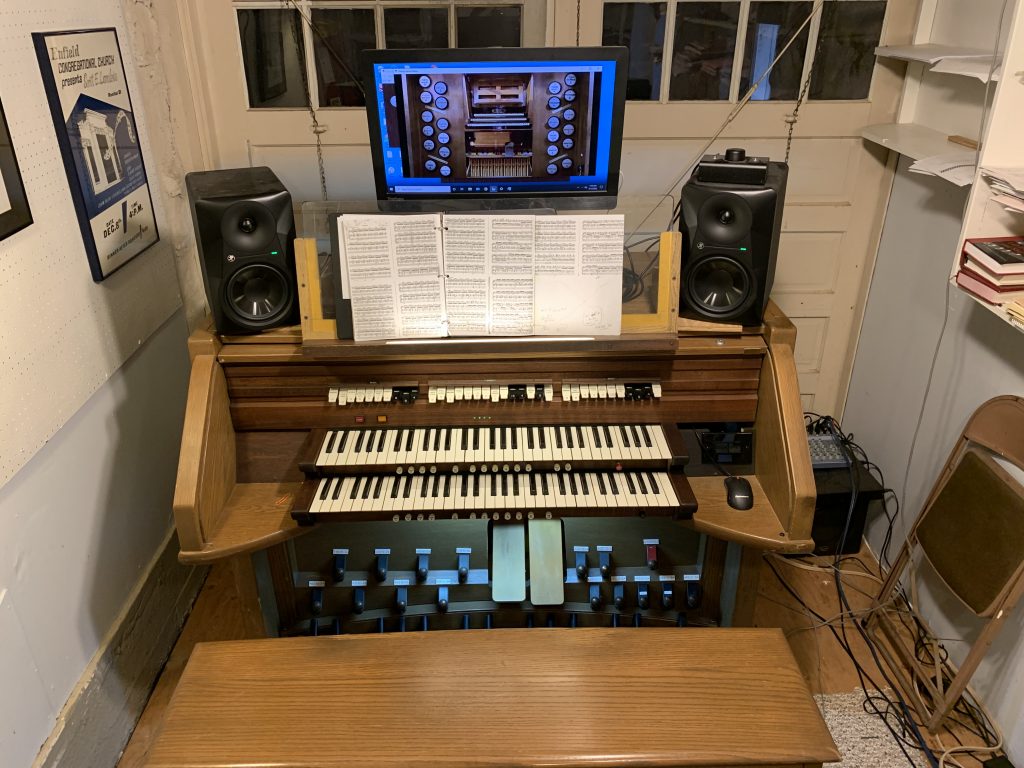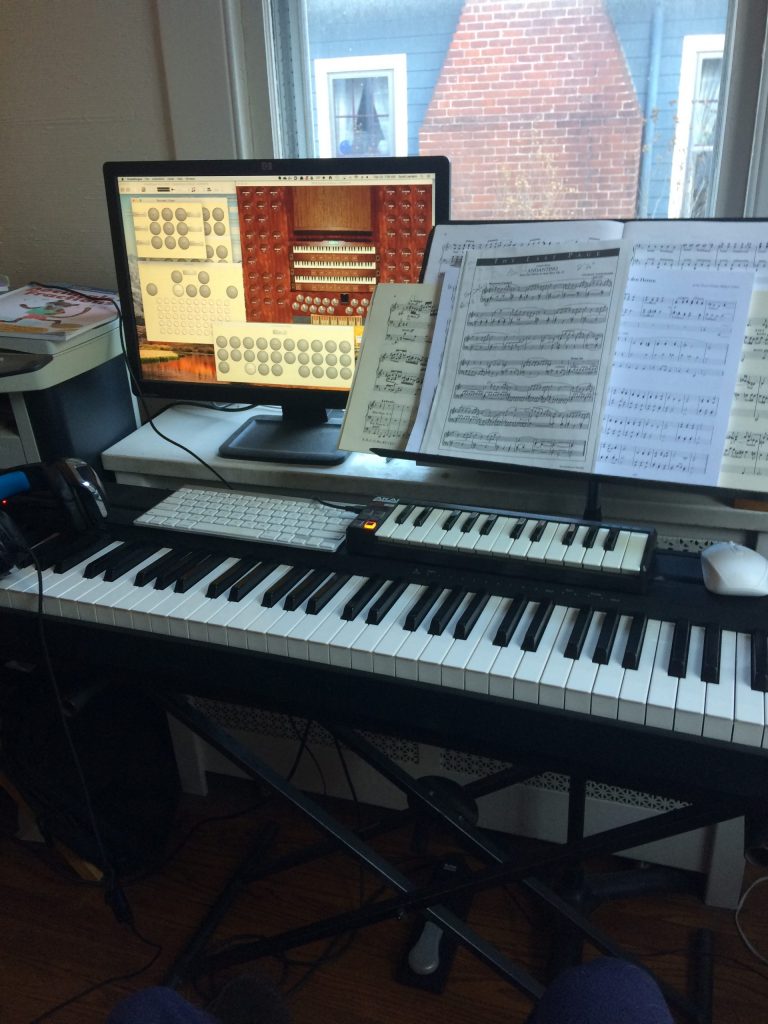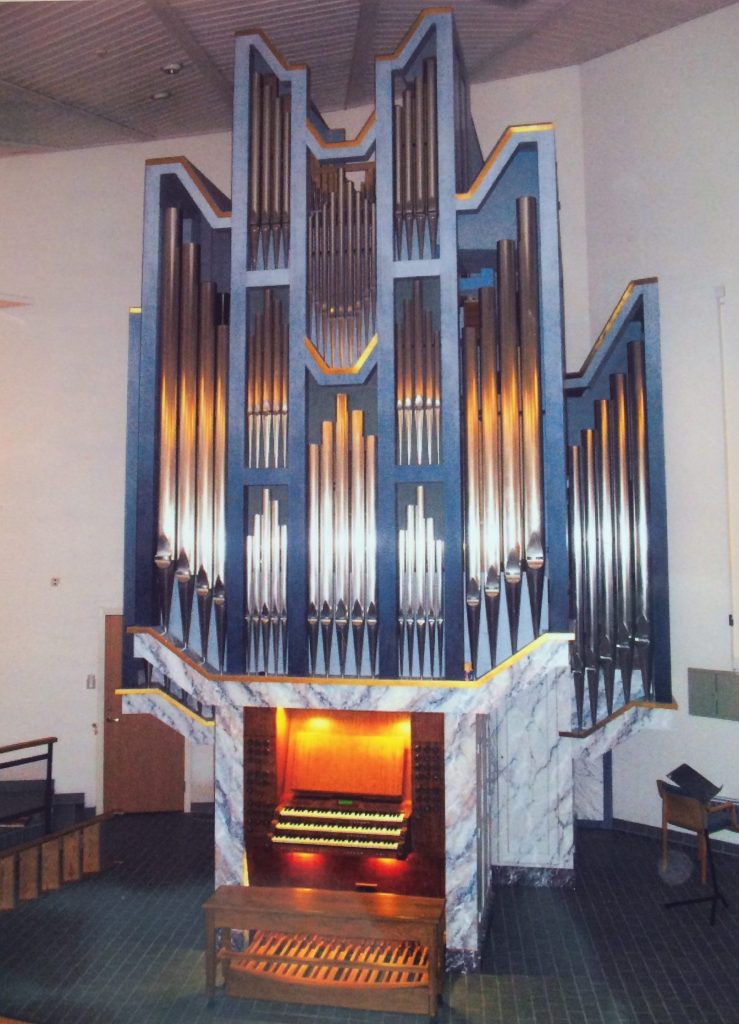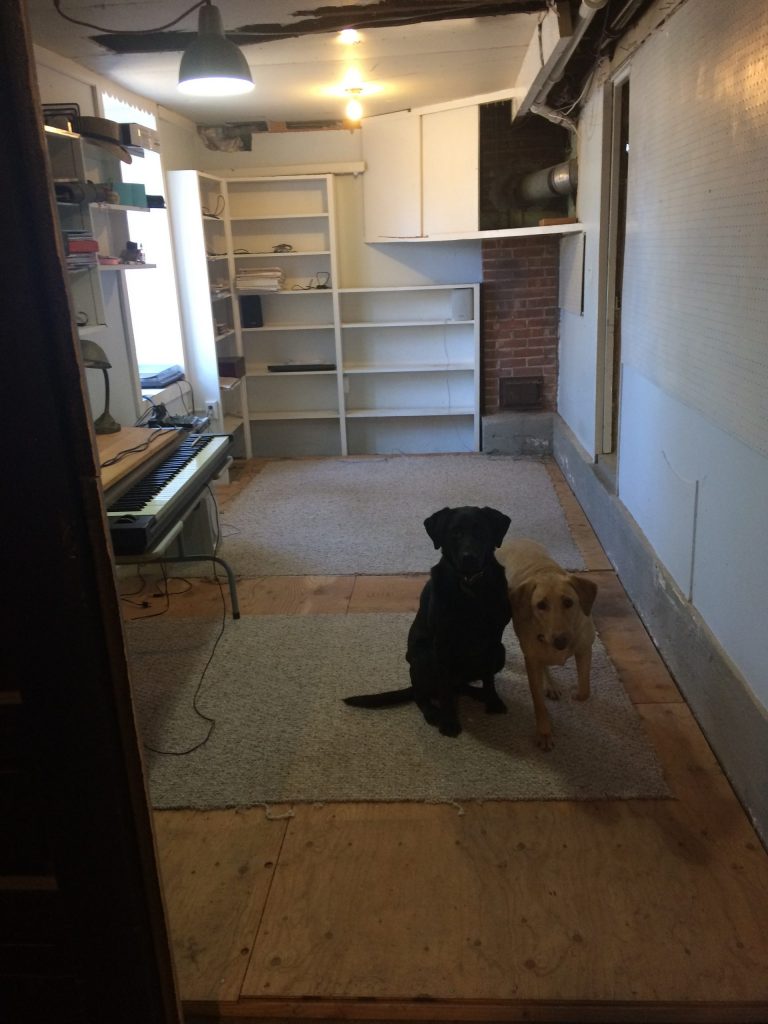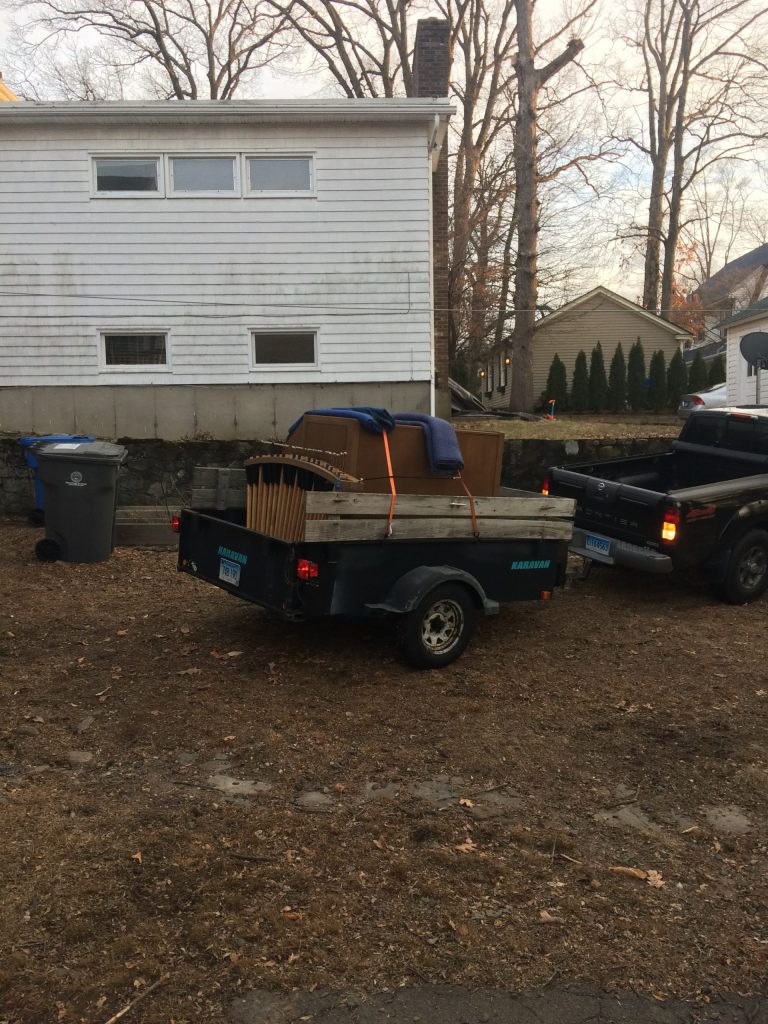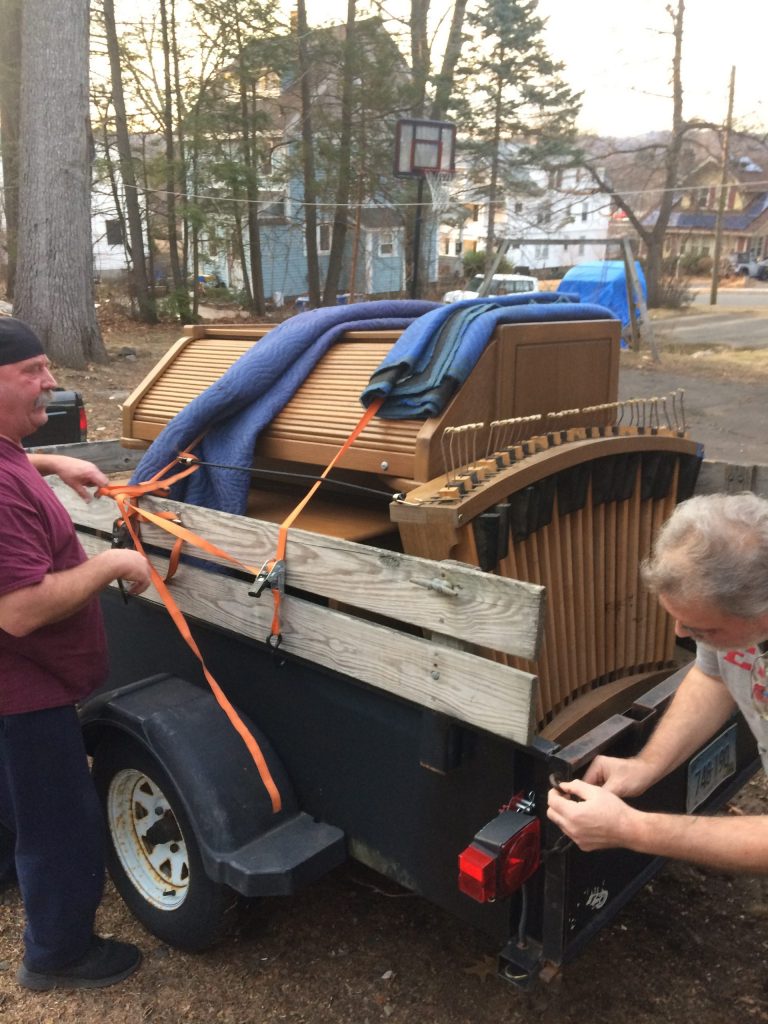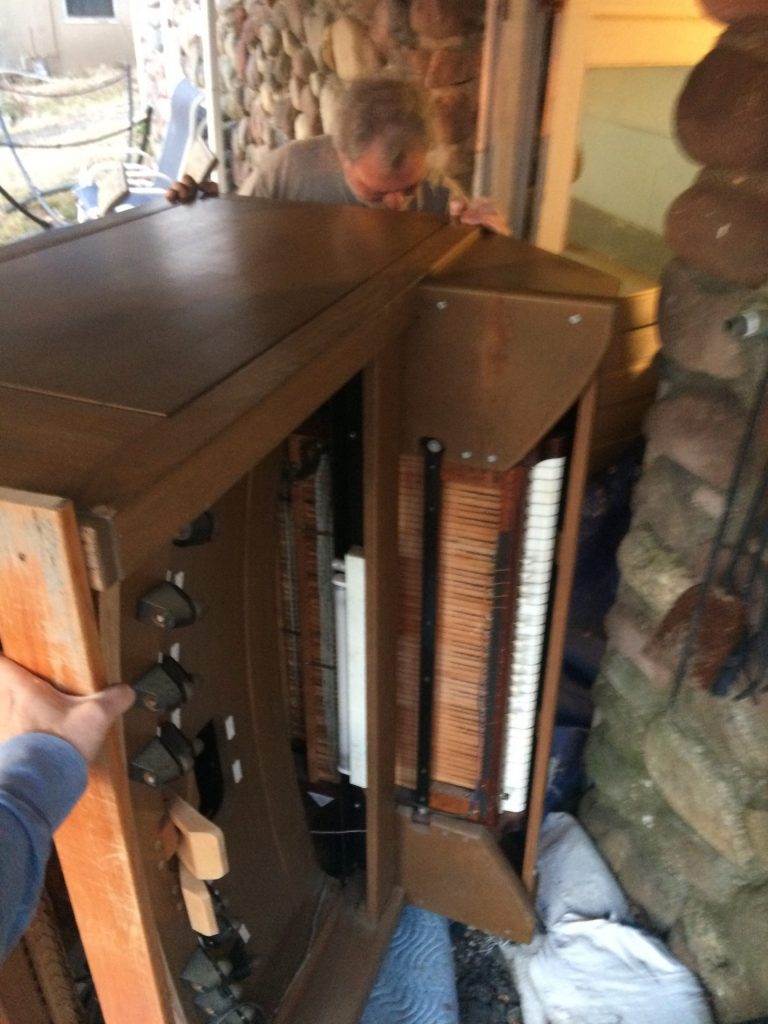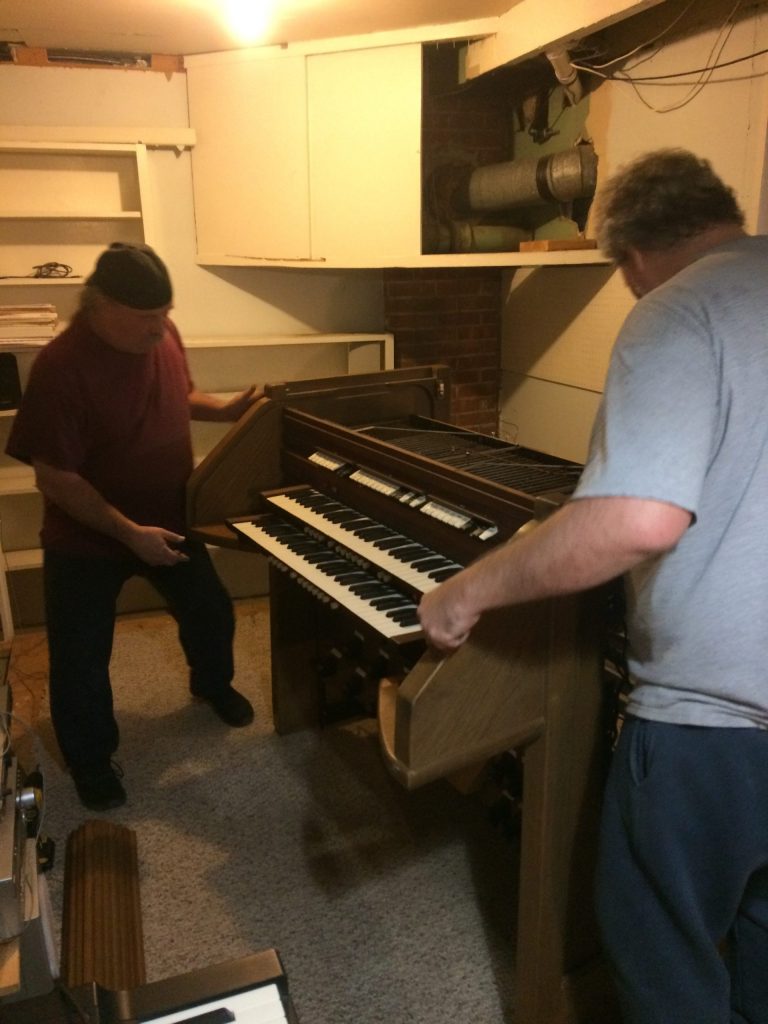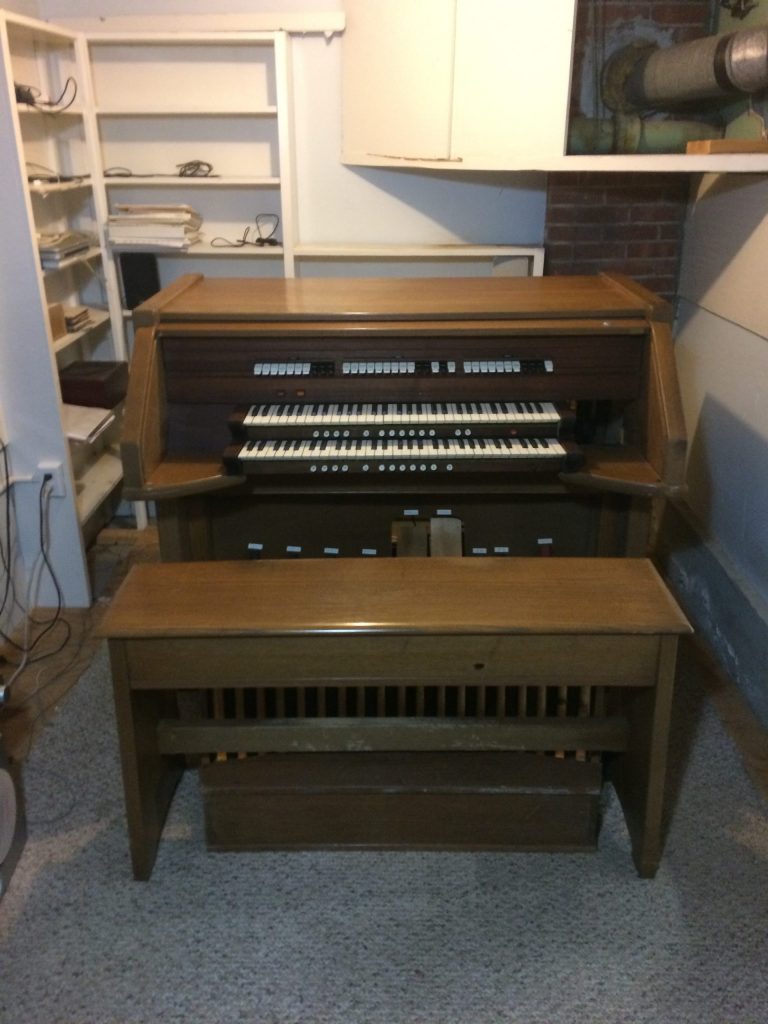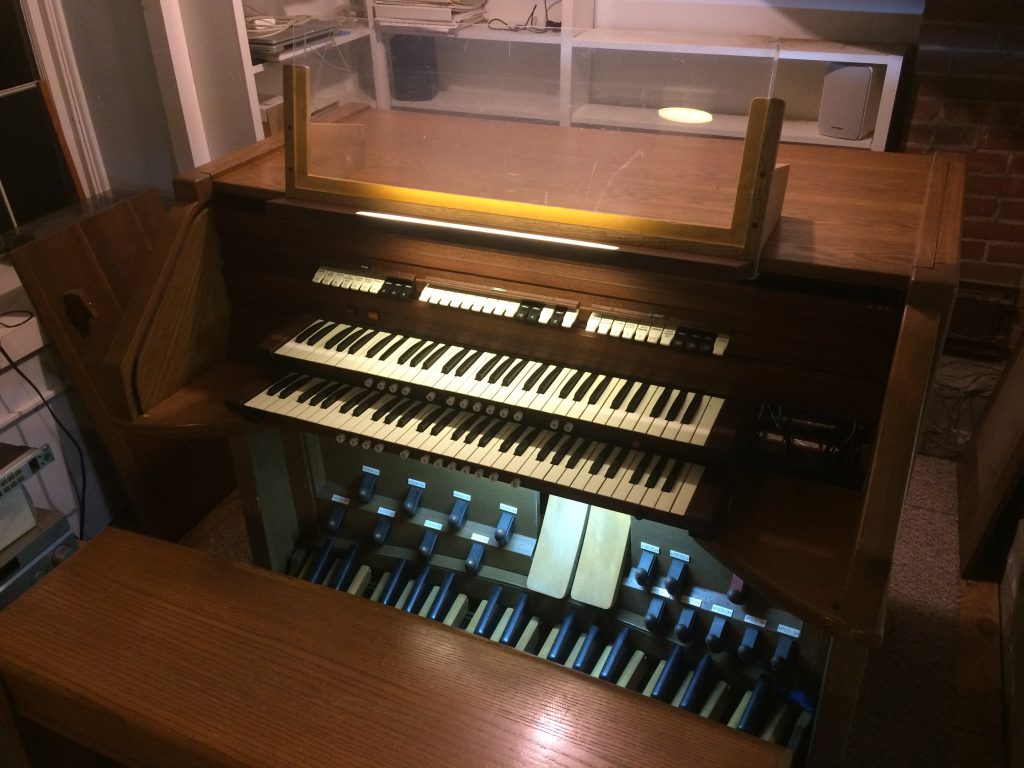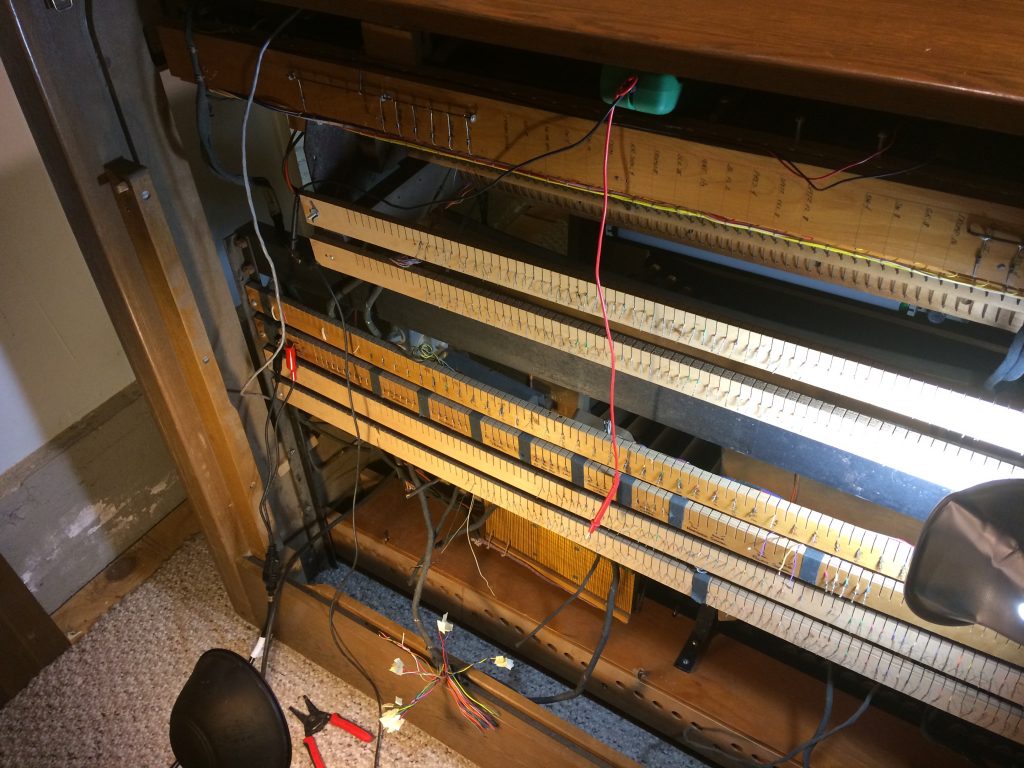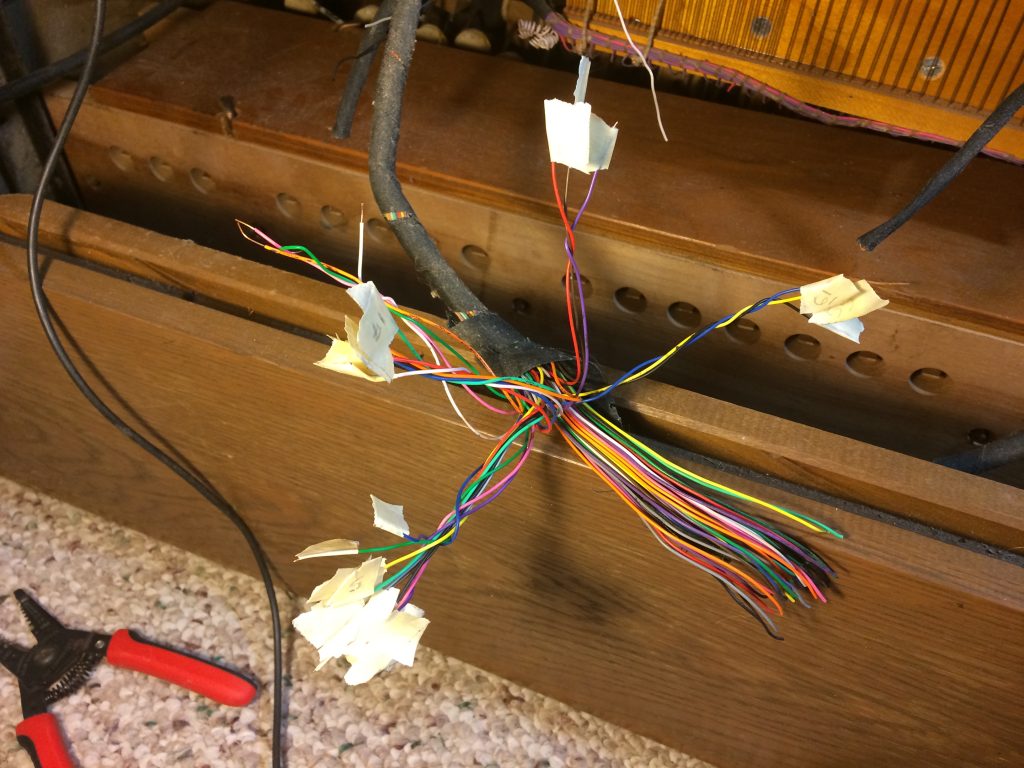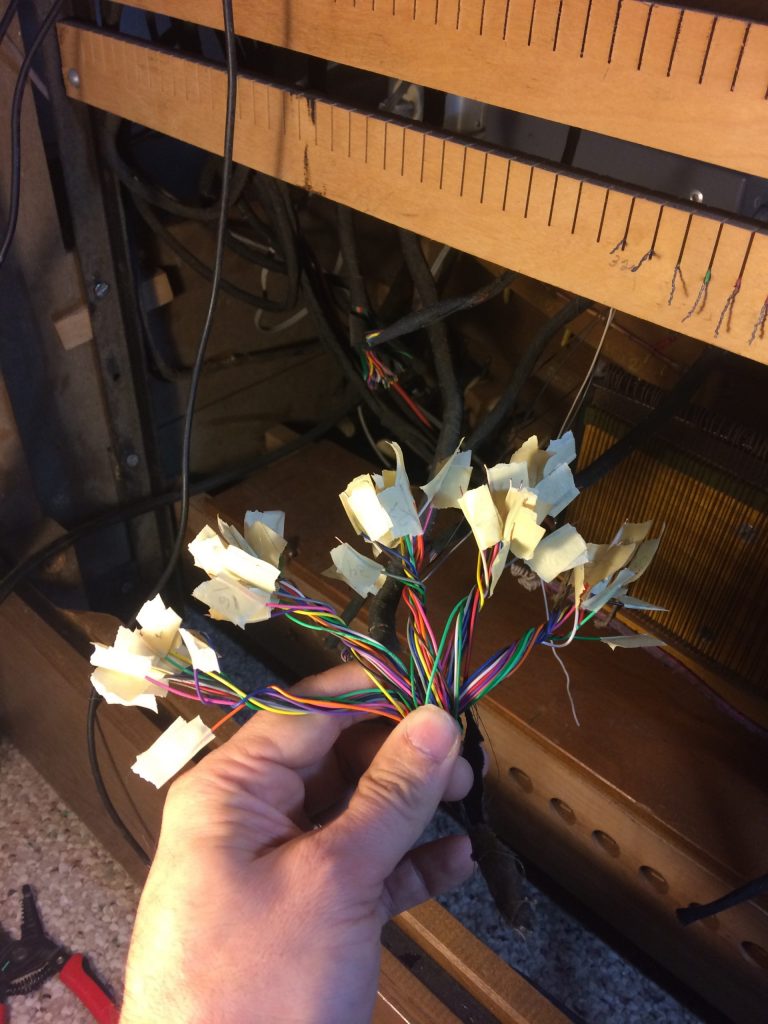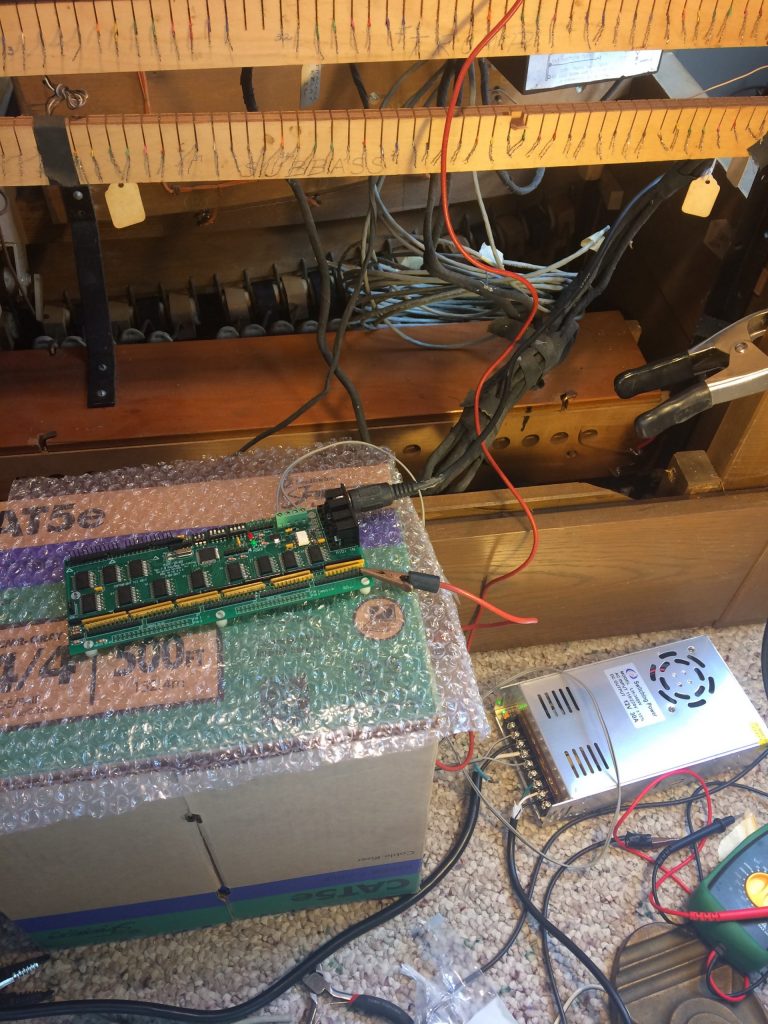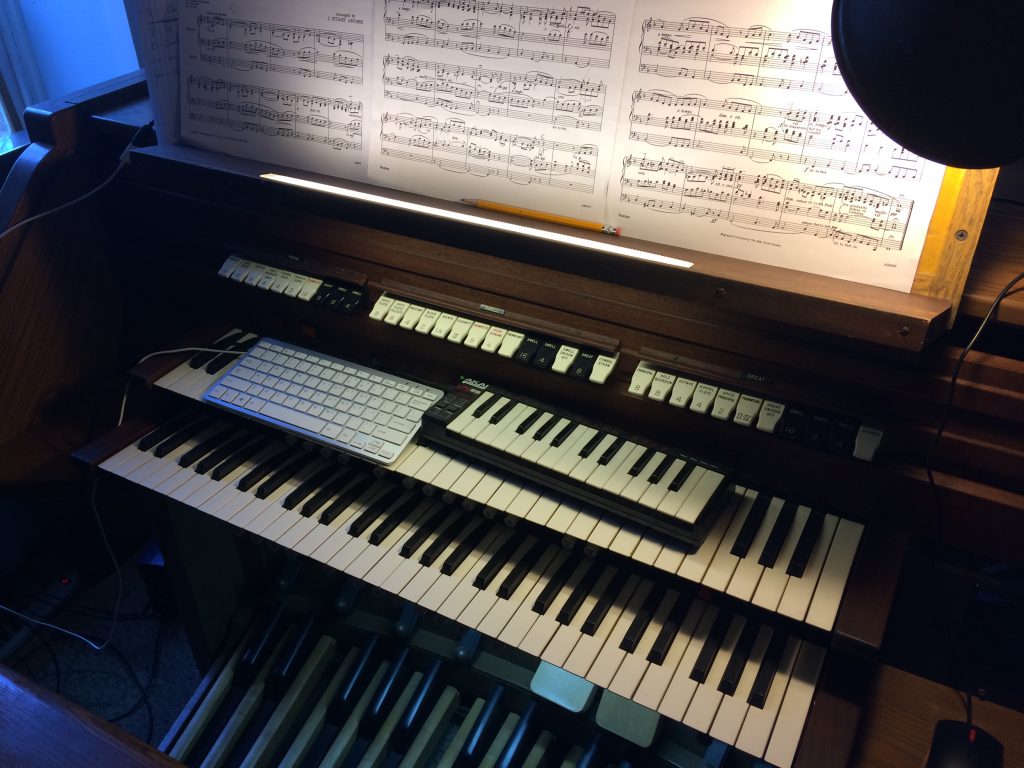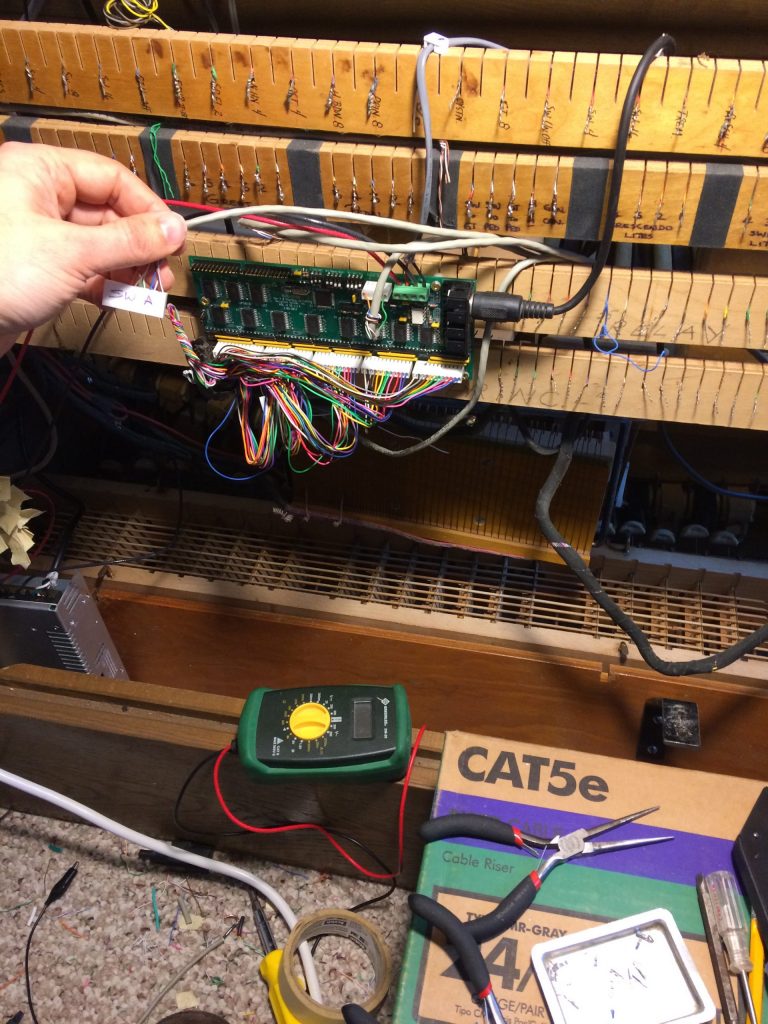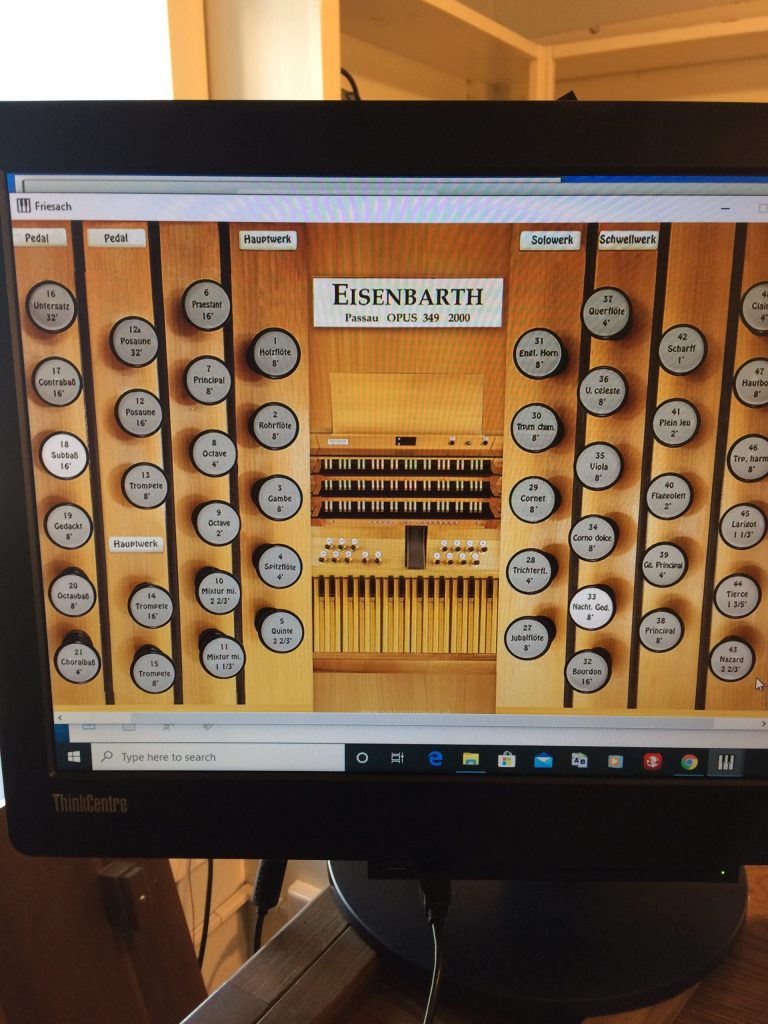This is the project description of my home virtual organ, played from the console from Austin Opus 2570 of 1974.
UPDATE, 5/2020: The console is now fully functional, and I have performed a number of recitals for our “salon” series… see the full series here, and the latest below:
UPDATE, 3/25/2020: Recital for our church Pipes Alive! series, played at home due to the COVID-19 self-isolation.
Practicing the Organ at Home
In mid February (2020), I set out to create some sort of home organ practice situation for myself, wanting to have more undisturbed time to work, particularly on improvisation and new literature. Several of my friends and colleagues have home Hauptwerk instruments (the premiere virtual organ software), and I was hoping to do “something simple” using that software.
My first plan was to connect one of my portable electronic keyboards to the computer via MIDI (Musical Instrument Digital Interface), and get the free version software. I discovered that Hauptwerk had recently released version 5, which no longer offered a truly functional free version. BUT, I soon discovered GrandOrgue, which is a fully functional, albeit a little less robust, virtual organ program.
I got it all rigged up, and quickly was able to set up a mini-keyboard (usually used for note entry in Finale notation software) as a tiny second “manual,” the damper pedal footswitch as a registration “next” button, and the computer keyboard for many shortcuts – registration pistons, and even using the up/down buttons to do crescendos and decrescendos with the virtual expression pedal. (Tricky to free up a finger to do this while playing!) Here’s a photo of that initial setup, and a recording of the Tournemire Andantino made with the software.
Pretty great sound, huh? I should go on a little tangent here and talk about GrandOrgue, and it’s big sister Hauptwerk. Both are “virtual organ” programs, and you can see from the photo that it duplicates the console “feel” of a pipe organ. But, even better, each organ is a sampled version of actual pipe organs around the world. Music geeks with even more commitment and time than I could ever have spend days or weeks recording every pipe of these instruments, in different ways (close up, short note, long note, far away to gather room ambience) – and with sometimes 5000 or more pipes, you can imagine how long that takes! The result is being able to immerse yourself, as a player, in these amazing, faraway organs, in their actual acoustics.
The one heard here is the Pitea School of Music organ, in Sweden. Click here for the details of this organ, and here is photo of the actual organ (courtesy Ed Clark).
There are a limited number of organs available for GrandOrgue, and eventually I’ll likely feel the need to graduate to the more robust program, Hauptwerk.
The Console
The next and most obvious problem with my practice “rig” was the lack of a pedalboard – a major component of the organ experience. So, I set out to find a simple, used pedalboard that I could “MIDI-fy” – wire each key to circuitry that would allow the pedals to be played with the computer software.
I found a number of pedalboards for sale on ebay, for varying prices from $500 and up. A company in Canada (that coincidentally we use at church for organ control components) offered one “ready to plug in” for just over $1000.
And then I found the listing for a complete 2-manual Austin pipe organ console from 1970 for sale for $800, and life changed. After considerable consultation with my wife, I went for it. (Her previous comment when asked about a home organ was always, “Absolutely! With your next wife.”)
It arrived dramatically in late February, on a rickety trailer that had to be driven into the backyard. Did it fit through the door into the basement? No, not even on its side. So it had to be completely disassembled in the backyard, and reassembled in the basement music room.
So much work to do!
As dramatic as it was getting the console, it was just the beginning. Now, the slow, painstaking process of “MIDI-fying” the organ. Connecting every key, pedal, botton, stop to converter boards that allow it to talk to the computer. But first, powering the console itself, and getting music rack and lights going were a random, fun priority:
Now, the important stuff…
This console was removed from a church in High Point, NC (where they apparently enlarged their pipe organ and purchased a new console), and when it was removed, they simply cut all the cables connecting the console to the pipework. So, the work on my part has been to go through those cables and identify which individual wire corresponds to which key/pedal/stop/button. There are 61 keys on each of the two manuals, 32 pedals, and 40+ additional controls. It’s a big job.
After a lot of research and conversation, I found and purchased converter boards to wire up, and set out to figure out the wiring in the console. Each wire had to be tested to a corresponding key, labeled 1-61, and grouped by octave.
Eventually, the first converter boards arrived, and I started with one working note! A big moment!
Next, the Swell (top keyboard) was wired up and fully functional, which meant I could play from any keyboard in the organ (including pedals), using the couplers built into the console. However, that revealed just how long the console had sat out in the elements. The many key contacts had become tarnished and needed to be cleaned and adjusted. That’s around 3 contacts for each of the 122 keys, and another 3 for each of the 32 pedals. Long and grueling, and when complete, still revealed some notes would either stick on or would not play consistently. I’ll be chasing down contact problems for a long time to come, while proceeding with wiring.
BUT, using some of my shortcut devices from the original setup, I could get the thing to play pretty well, and to date have an independent pedal functioning, as I await the third converter board for the second keyboard.
The work of wiring continues, including new cabling for the pistons and toe studs (shortcut buttons under each keyboard and above the pedalboard), and permanent mounting of the converter boards (with somewhat clean routing of all the cables). I hope to have near-complete functionality soon.
With all that going, and knowing there is much left to do, I was able to record this little bit of “Londonderry Air” in honor of St. Patrick’s Day. I added a new organ to GrandOrgue, my new favorite, an organ in Friesach, Austria. Check it out here.
Amidst all the work, I’ve really enjoyed playing, practicing, and stretching my abilities as an improviser. It’s already had an effect on my Sunday playing, and brings hours of joy.
And here’s the recording.
THANKS to my good friends for so much advice and help!
In random order: Ray Giolitto, Will Sherwood, Ed Clark, Ralph Valentine, Alex Belair, Michael Tanguay; Paul Joseph, who sold (and delivered, AND disassembled/reassembled) the console; and Joe at DTS systems, for repairing a converter board that I broke – at no charge.

